Nothing beats ice climbing in Iceland for an unforgettable outdoor adventure. It’s a unique and thrilling activity that you should take advantage of. From the breathtaking landscapes to the exhilarating challenge of scaling frozen walls, this extreme sport rewards you with a spectacular experience. Read on to learn more about what awaits when you embark on a trip for ice climbing in Iceland.
Iceland is a perfect place to go ice climbing. Make it happen with an Iceland Trip Planner. Our community also provides excellent and customized Iceland itineraries. Let’s plan your dream trip.
The best glacier hikes and ice climbing in Iceland
When you think of Iceland, what comes to mind? So many people immediately envision rugged volcanoes, wild waterfalls, and breathtaking green landscapes. But did you know that this incredible country is also home to some of the best ice-climbing experiences in the world?
From exploring frozen glaciers to navigating vast crevasses, adventurers from all over come to Iceland to take on the challenge of scaling massive natural walls of ice.
The majestic Sólheimajökull Glacier

Sólheimajökull is Iceland’s fourth largest glacier and is an outlet glacier from Mýrdalsjökull glacier.
Discover the majestic beauty of Iceland’s Sólheimajökull Glacier on an awe-inspiring adventure. This epic glacier, between active volcanoes Katla and Eyjafjallajokull, lets you walk on an ancient ice field and see its changing landscape.
See the stunning blue and black ice caps and the glacier’s features, like ice caves and crevasses. Join a guided tour with experts who provide the equipment and keep you safe on this icy wonder. Kayak the glacier lagoon, hike the moving ice, or climb its frozen walls. Sólheimajökull Glacier offers an extraordinary journey that will amaze you with Iceland’s natural wonders.
Best time to visit Sólheimajökull Glacier
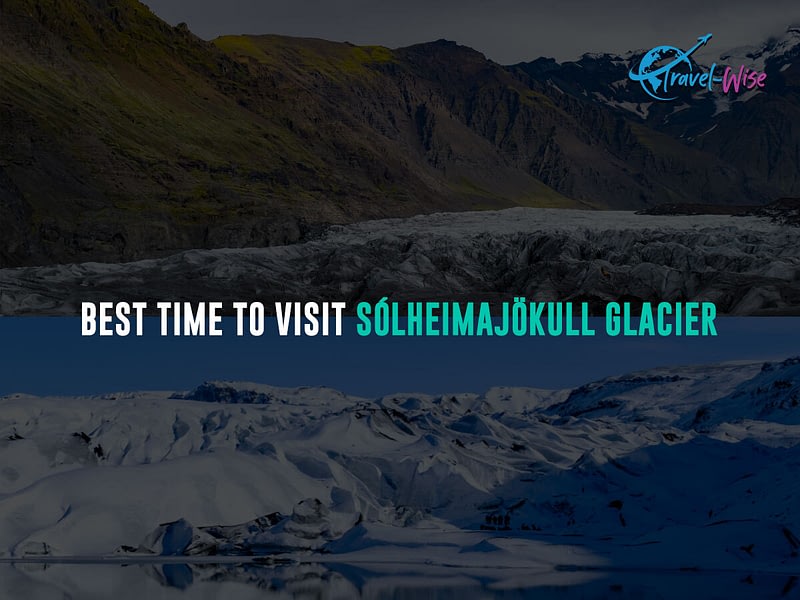
Sólheimajökull Glacier is a captivating destination all year round. But if you want to make the most of your glacier adventure, visit during the summer months, from June to August. You’ll have more sunlight and longer days to explore the glacier and enjoy outdoor activities.
The weather will also be milder, making having fun on the ice easier. But if you visit in the winter, you’ll have a different glacier experience. You’ll see the ice caves, a unique and beautiful sight. No matter when you visit, Sólheimajökull Glacier will amaze you with its stunning scenery and thrilling activities.
Nearby luxury hotels to Sólheimajökull Glacier
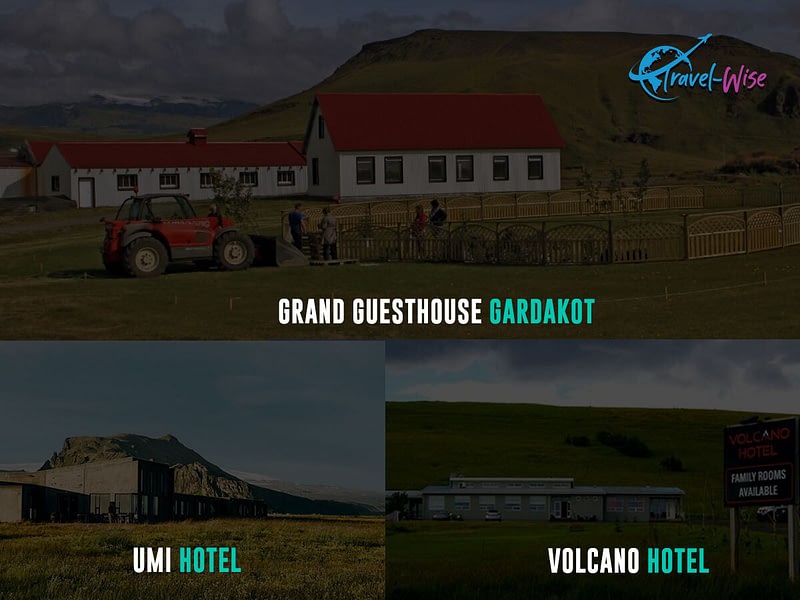
You can find many nearby hotels when you visit Sólheimajökull Glacier. Grand Guesthouse Gardakot, 15.9 km away, has cozy rooms, complimentary breakfast, Wi-Fi, and a lounge and garden for 17,900 ISK per night. UMI Hotel, 14.2 km away, has modern rooms, complimentary breakfast, Wi-Fi, and a restaurant and bar with mountain views for 28,900 ISK per night. Volcano Hotel, 14.5 km away, has spacious rooms, complimentary breakfast, Wi-Fi, and a lounge and terrace with volcano views for 25,900 ISK per night. These hotels offer comfortable accommodations and amenities to make your glacier adventure more enjoyable and memorable.
Budget-friendly hotels near Sólheimajökull Glacier

There are many budget-friendly hotels near Sólheimajökull Glacier. Hotel Dyrholaey, 17.8 km away, has cozy rooms, complimentary breakfast, Wi-Fi, and a restaurant and bar for 11,900 ISK per night. Solheimahjaleiga Guesthouse, 5.3 km away, has comfortable rooms, complimentary Wi-Fi, and a shared kitchen and lounge for 12,900 ISK per night.
Skogafoss Hotel- Bistro Bar, 7.7 km away, has cozy rooms, complimentary breakfast and Wi-Fi, and a bistro and bar with a waterfall view for 14,900 ISK per night. These hotels are convenient and pleasant and let you save money for more experiences in the beautiful Icelandic landscape.
The weather around Sólheimajökull Glacier
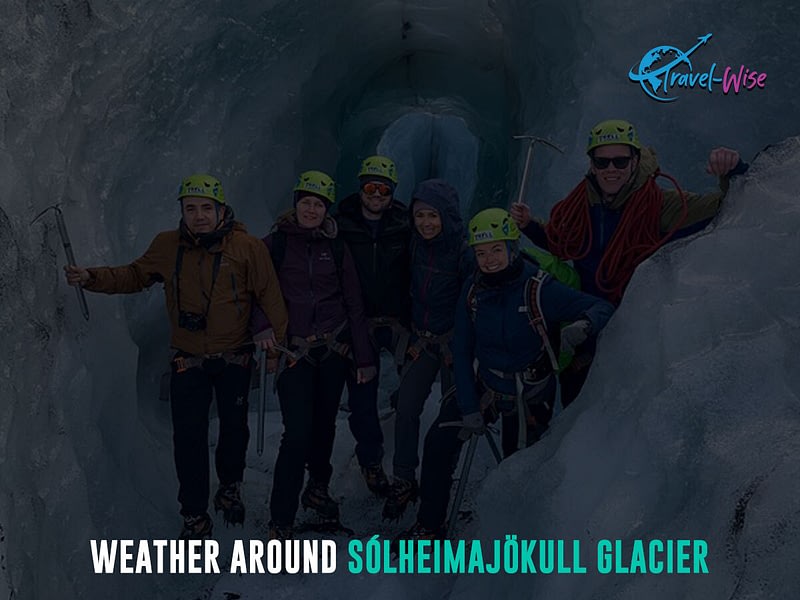
When visiting Sólheimajökull Glacier, you should be prepared for highly variable and unpredictable weather conditions. The summer months bring temperatures ranging from 5ºC to 15ºC, but don’t be fooled by the bright sunshine, as rain and even snow can occur unexpectedly.
In contrast, winter can be much colder, with temperatures dropping below 0ºC and snow and ice covering the glacier and its surroundings. Moreover, the wind can be pretty strong, sometimes gusting up to 30 mph or more near the glacier.
To stay comfortable and safe during your adventure, dress appropriately, wearing warm, windproof clothing and accessories. A versatile wardrobe that caters to all kinds of weather will allow you to fully enjoy the awe-inspiring beauty of Sólheimajökull Glacier, regardless of the elements you encounter.
Explore Sólheimajökull Glacier with a Guide
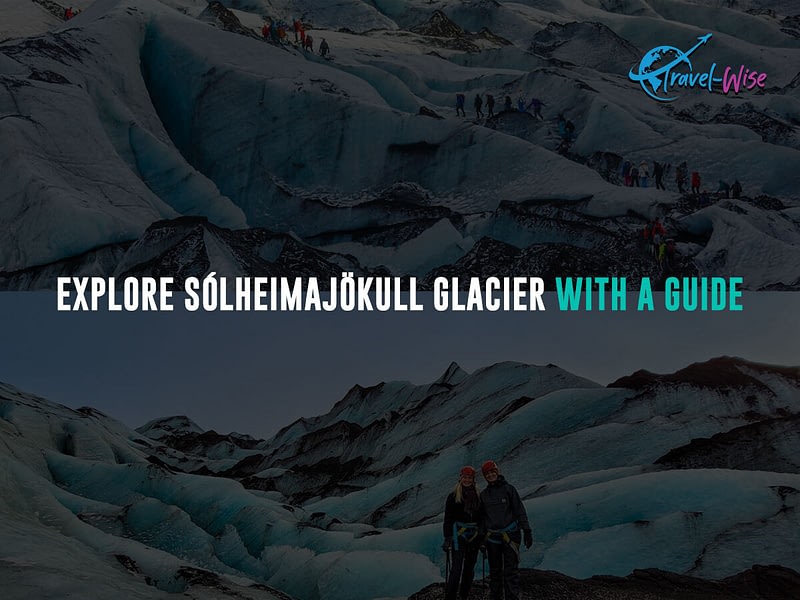
Sólheimajökull Glacier offers unforgettable guided adventures for different tastes and abilities. Icelandic Mountain Guides have two fantastic options. The “Easy Glacier Walk on Solheimajokull” is great for families. It lasts 2.5 hours and covers 4 km of the glacier. You’ll see stunning ice formations, crevasses, and ridges and learn about the glacier’s history and geology from a certified guide. The price is 15,990 ISK per person, and you’ll get all the equipment you need, like crampons, ice axes, and helmets.
The “Solheimajokull Glacier Hike” is for those who want more challenge. It lasts 3.5 hours and covers 5 km of the glacier. You’ll explore the changing landscape and find hidden features like sinkholes and ice tunnels with an experienced professional who will show you how to use essential ice equipment. The price is 18,990 ISK per person, with all the necessary equipment included. With these guided options, you can enjoy the beauty of Sólheimajökull Glacier safely and learn from knowledgeable guides.
The Vatnajökull Glacier
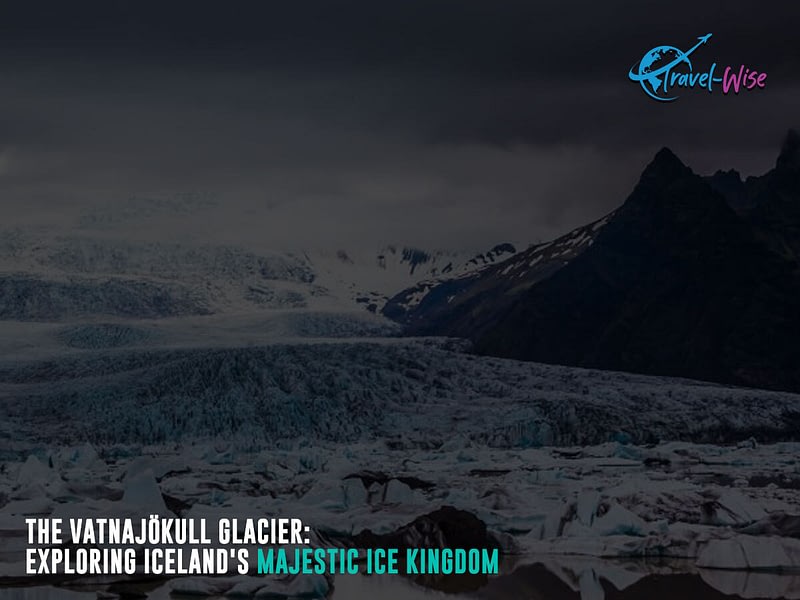
See the beauty of Iceland’s ice kingdom, the Vatnajökull Glacier, and adventure in its ice caves. It’s the largest glacier in Europe, covering half of Iceland, and has been in famous films like James Bond and Game of Thrones. Join guided tours by Arctic Adventures, Extreme Iceland, and Glacier Adventure from November to March. See the ice caves, a rare experience, and ride a monster truck on the ice while learning from your expert guide. Dress for changing weather and book early; these tours are very popular. Enjoy the magic of Vatnajökull Glacier and make memories that last forever.
Best time to visit Vatnajökull Glacier

Vatnajökull Glacier is a beautiful destination all year round. The summer months bring long days, mild weather, and many activities. You can enjoy hikes, glacier walks, and boat tours on the Jökulsárlón glacier lagoon. From November to March, the winter season lets you explore the ice caves with their blue colors and beauty. Whatever the season, Vatnajökull Glacier has something for everyone, and you’ll make unforgettable memories in Iceland’s icy realm.
Luxury hotels near Vatnajökull Glacier
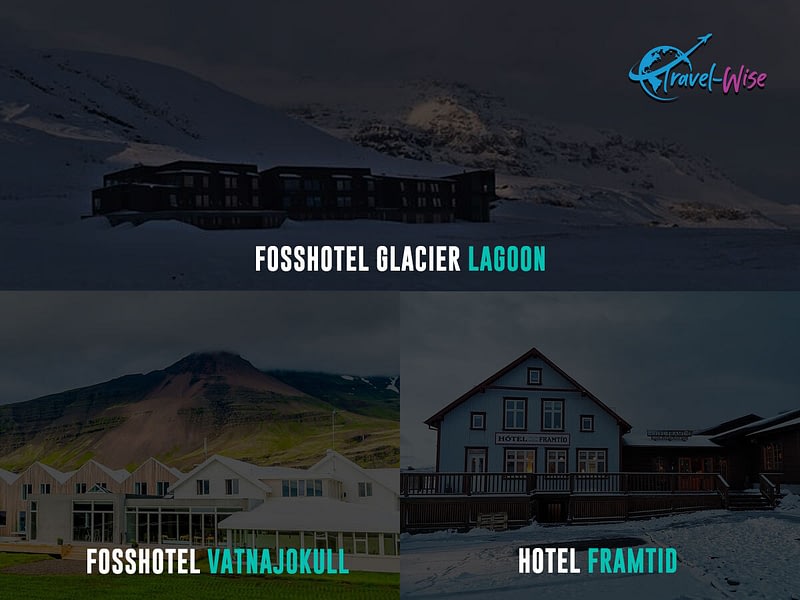
Treat yourself to luxury at these amazing hotels near Vatnajökull Glacier. Fosshotel Glacier Lagoon, a 4-star retreat, has elegant rooms with flat-screen TVs, glacier views, and a restaurant, bar, terrace, and garden. The price is USD 296 per night. Fosshotel Vatnajokull, 7.3 miles away, has similar amenities, plus a hot tub and sauna, for USD 286 per night. Hotel Framtid, 39.4 miles from the glacier, is a 3-star escape with cozy rooms, sea views, a restaurant, a bar, a hot tub, and a sauna. The price is USD 165 per night. These hotels will make your Vatnajökull journey more special, with luxury and natural beauty in harmony.
Budget-friendly hotels near Vatnajökull Glacier

Enjoy comfort and affordability at these budget-friendly hotels near Vatnajökull Glacier. Hotel Jokull, a 3-star gem, has cozy rooms with mountain views, private bathrooms, and free Wi-Fi for USD 165 per night. Hotel Hofn, 0.3 miles from the glacier, has comfortable rooms with flat-screen TVs and private bathrooms, and a restaurant, bar, lounge, and library for USD 147 per night. Arnanes Country Hotel, also 0.3 miles from the glacier, has cozy rooms with garden views and free Wi-Fi, and a restaurant, bar, terrace, and playground for USD 139 per night. These hotels are affordable and comfortable, making your Vatnajökull journey more memorable.
The weather around Vatnajökull Glacier

Vatnajökull Glacier is beautiful in every season. For the ice caves, go in winter (November to March) when the ice is blue and safe but cold and dark. You need a guided tour for your safety. For milder weather and fewer crowds, go in spring (March to May) or autumn (September to November), but some activities may not be available. Enjoy the wonders of Vatnajökull Glacier, no matter the season, and see its natural beauty.
Explore Vatnajökull Glacier with a Guide
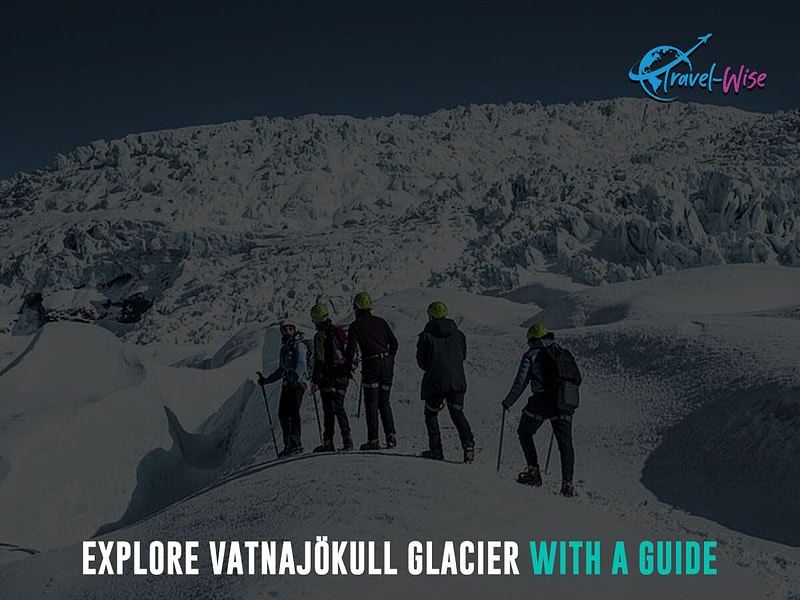
Explore the wonders of Vatnajökull Glacier with expert guides who offer different activities for your taste. Arctic Adventures has glacier tours, with glacier hiking, ice caving, and glacier lagoon trips, from USD 100 to USD 221 per person, depending on the tour and season. For more fun, their Vatnajökull Ice Cave Tour & Glacier Hike at USD 160 per person lets you hike on Europe’s largest glacier and see a natural ice cave. Or choose a private experience with the Private Full-Day Tour, at USD 1,200 per group (up to 4 people), with access to Vatnajökull’s secret glaciers and an outdoor picnic in the glacier’s beauty. Let experienced guides show you this glacial wonderland for a fantastic experience.
You can also make your own Iceland itinerary. Ensure you have enough time to see everything Iceland offers with our Iceland Trip Planner.
Reykjavik
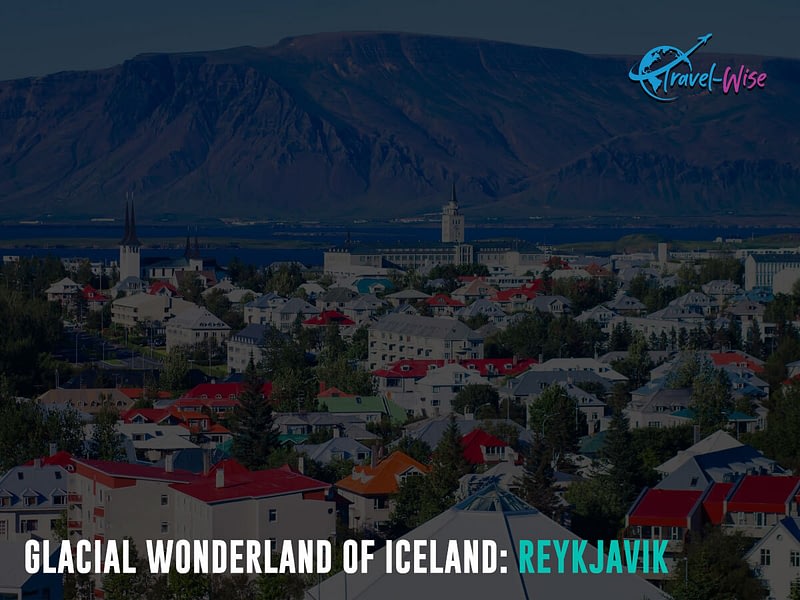
Reykjavik is the perfect destination for those who want to experience the wonders of Iceland’s glaciers and waterfalls. From the colorful and cozy capital city, you can embark on various adventures that will take you to the heart of nature’s beauty and power. Here are some ways to make your trip even better:
- Start your journey with a visit to the Jökulsárlón glacier lagoon, where you can see huge icebergs floating on the serene water. This is one of the most spectacular sights in Iceland, and you can even take a boat tour to get closer to the ice. Don’t forget to bring your camera, as you might spot some seals or birds along the way.
- Next, explore the Langjökull ice cave, where you can walk inside one of the largest glaciers in Iceland. You’ll be amazed by the stunning blue ice and the fascinating history of the glacier. You’ll need a guide and special equipment to enter the cave, but this once-in-a-lifetime experience is well worth it.
- For a more challenging adventure, hike the Sólheimajökull glacier, where you can feel the thrill of walking on ancient ice. You’ll see incredible ice formations, crevasses, and ridges and learn about the effects of climate change on the glacier. You’ll also need a guide and special equipment for this hike, but you’ll be rewarded with breathtaking views and a sense of accomplishment.
- Finally, don’t miss seeing some of Iceland’s most beautiful waterfalls near Reykjavik. You can visit the famous Gullfoss waterfall, where you can witness the power of the water as it plunges into a deep canyon. You can also see the Seljalandsfoss waterfall, where you can walk behind the water curtain and enjoy a unique perspective. Or you can check out the Skógafoss waterfall, where you can climb up to the top and admire the rainbow that forms in the spray.
Best time to visit Reykjavik
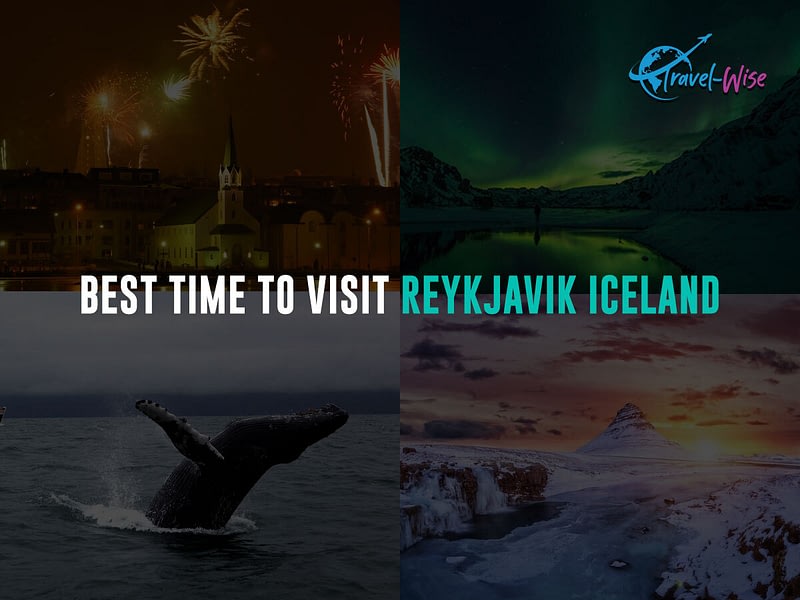
Reykjavik, Iceland, is a great destination in every season. Summer (June to August) is for festivals, long days, a lively atmosphere, higher costs, and more crowds. Autumn (September to November) is for milder weather, fewer tourists, and northern lights, but also a quieter and cheaper experience. Winter (December to February) is for snowy landscapes, lights, and more northern lights, short days, and winter activities and festivals. Spring (March to May) is for nature, wildlife, longer days, changing weather, and flexible planning. Pick the season that matches your interests and activities for an amazing adventure in Reykjavik.
10 interesting facts on the areas
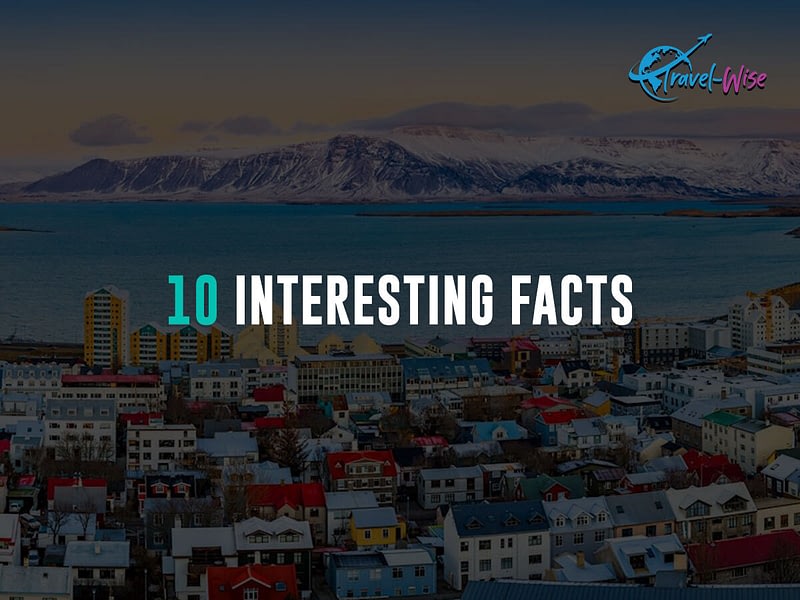
- Sólheimajökull Glacier is Iceland’s southernmost glacier and an outlet from Mýrdalsjökull, which covers the volcano Katla.
- Sólheimajökull Glacier is shrinking fast due to climate change. It has a glacier lagoon about 70 meters deep at its edge.
- Sólheimajökull Glacier is great for glacier hiking and ice climbing, with features like crevasses, ridges, and ice caves.
- Vatnajökull Glacier is Iceland’s and Europe’s largest glacier by volume, covering 8% of Iceland.
- Vatnajökull Glacier covers several active volcanoes, such as Bárðarbunga, Grímsvötn, and Öræfajökull.
- Vatnajökull Glacier has the highest peak in Iceland, Hvannadalshnúkur, which is 2,110 meters high.
- Vatnajökull Glacier is part of the Vatnajökull National Park, Europe’s largest national park and a UNESCO World Heritage Site.
- Reykjavik is the world’s northernmost capital city, at 64 degrees north.
- Reykjavik means “smoky bay” in Icelandic, from the steam of the geothermal springs that the first settlers saw.
- Reykjavik has a vibrant culture, art, music, lively nightlife, and festivals.
Preparing for ice climbing
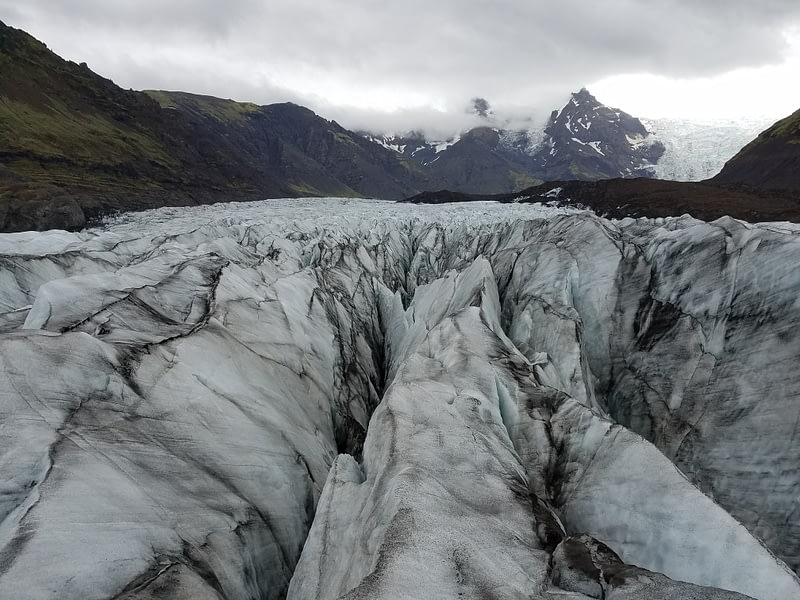
Know the Types
There are essentially four types of ice climbing, similar to rock climbing.
- Glacier climbing / Glacier walk – when you step foot on a glacier, it is considered “climbing” because of the technical nature glacier brings. It requires safety equipment and experience to do so safely. Sometimes, when a team is expected hidden crevasses, a rope will be used to ensure if someone falls in, the rest of the team can arrest the fall.
- Top Rope – the next level of verticality is the top rope, which requires a person “belaying” the climber. Should one occur, the belayer must stand stationary and be vigilant to catch a fall. Top rope is the traditional and common way to begin ice climbing and tends to be relatively safe.
- Sport – similar to lead climbing in rock climbing, a fixed track is present, and a climber can clip into the stationary safety bolts and anchors. Sport climbing typically requires a belayer if you want someone to catch a fall.
- Traditional – the traditional form of ice climbing combines the best of top rope and sport and requires that the team of climbers set their safety anchor points up. This requires an experienced crew to do it safely.
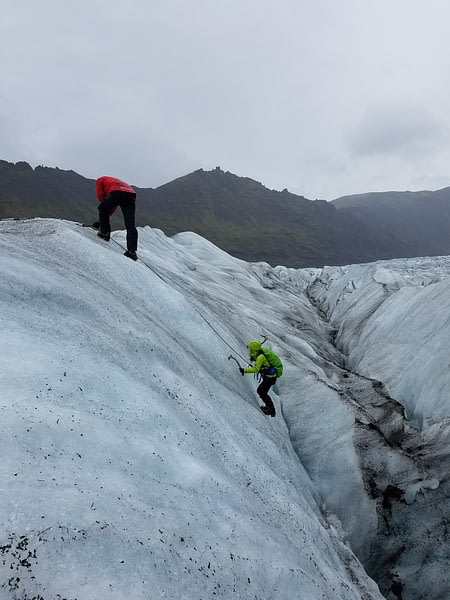
Do Your Research
Ice climbing is a thrilling and rewarding activity, but it also requires proper preparation. You need to know the different types of ice climbing, the gear you’ll need, and the safety precautions you should take. We’ll review it at the high level below, but be sure to discuss it with an experienced climber and take some training courses. It is dangerous to do this activity unprepared. We recommend joining group tours, especially on travel, as they will have experienced guides to help teach, route finding, and help keep you safe.
Most tours and group trips will take a good part of the day, ranging from 6-12 hours. Researching the tour companies’ reviews and finding ones with a good safety and customer satisfaction track record is good.
Get the Right Gear
Ice hiking requires special gear, including an ice axe, crampons, and a helmet. Also, for ice climbing safety rope, two ice tools (specialized aggressive ice axes), ice screws, a climbing harness, and a belay device. You will also need layered clothes (more on that below).
Ensuring you have the right equipment before you head out is essential, as it can make a big difference in your safety and comfort. You can rent or buy gear from a local climbing shop.
Choose the Right Location
When choosing a location for your ice-climbing adventure, picking a safe place with good conditions is essential. Some popular spots for ice climbing include Iceland, Norway, and Switzerland. For Iceland, you can check online for reports on conditions before you go.
Be Prepared for the Cold
Ice climbing is outdoors, so you must be prepared for cold weather. This means dressing in layers and bringing along hand warmers and lip balm. You should be prepared with water and windproof pants and a jacket too. Insulated mountaineering boots are a must to keep your feet warm. It’s also a good idea to bring snacks and water to keep your energy up.
Also, don’t forget about sunscreen! Even when cloudy, the light reflects off the white surface and can fry you. Apply it often and amply.
Follow Safety Precautions

Safety is paramount when ice climbing, so follow all of the safety precautions experienced climbers recommend. This includes always using a rope and having a partner with you.
The glaciers are constantly moving slowly but steadily. They shift and change over time, meaning the routes change frequently. Knowing where you are going and how to evaluate the terrain for safety risks. Guided tours often lay down ropes, ladders, and other safety equipment to help traverse the glaciers.
Weather can change pretty rapidly, too. Keep an eye on the weather patterns; it is best to start heading out if things turn for the worst. Sometimes, you may be a few hours into the glacier, so you must plan accordingly to get back to safety before bad weather hits.
Conclusion
Ice climbing in Iceland is a fantastic experience that you will never forget. With the proper preparation, you can ensure that you have a safe and enjoyable time while enjoying the stunning scenery. Follow our tips and advice to help you get ready for your next Iceland adventure from Travel-Wise. Do you have any other questions about ice climbing or glacier hiking in Iceland? Let us know.
Also, check out our Iceland itinerary. With our Iceland trip planner, you can see every spot on time. And if you need to learn how to make one, please look at it. And remember to share it with your friends who want to join you on the journey.
Start planning your trip now with Travel-Wise’s free trip-planning tools to have you on your way to your destination faster than ever!

